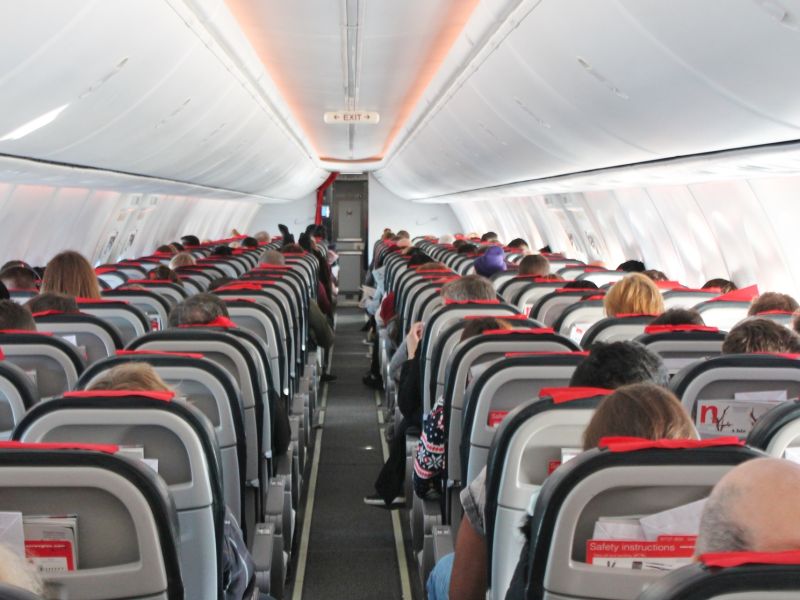Tough Travel Bans Only ‘Modestly’ Slow Coronavirus Spread: Study
 By E.J. Mundell
By E.J. Mundell
HealthDay Reporter
FRIDAY, March six, 2020 (HealthDay News) — An in-depth examination of rigorous vacation bans, the two in and outdoors of China, finds that they may possibly have done little to impede the distribute of coronavirus.
In fact, even the draconian ninety% vacation constraints positioned on residents residing in the epidemic’s epicenter, Wuhan, “delayed the overall epidemic development by only 3 to 5 days in mainland China,” in accordance to researchers who published their results March six in the journal Science.
As to bans on flights from Wuhan to other nations around the world, which include the United States, the new study implies that this sort of efforts likely only briefly slowed the global distribute of COVID-19.
That is due to the fact a lot of undetected instances were being now circulating globally, the researchers believe that, and at the time these instances “seeded” a new state, area outbreaks unconnected to China got speedily underway.
The base line is that “shifting forward, we anticipate that vacation constraints to COVID-19-affected places will have [only] modest outcomes” in curbing the variety of new instances, reported a crew led by Matteo Chinazzi, of Northeastern College in Boston.
So, what will function to assist slow the virus?
The respond to: “transmission-reduction interventions,” in accordance to Chinazzi’s group.
These interventions contain popular-feeling measures U.S. health and fitness officials have been advocating for months, which include recurrent hand washing, “social distancing” (no handshaking, avoiding crowds), being house when sick, coughing into your elbow and cleaning regularly touched surfaces.
In the new analyze, researchers devised a advanced product of the predicament in China and globally. In aspect, this concerned using “actual-entire world data wherever the entire world is divided into sub-populations centered all around big transportation hubs [typically airports].”
Overall, the product concerned far more than 3,200 “sub-populations” throughout far more than 200 nations around the world, the crew reported. They also collected data from the Worldwide Air Transport Association (IATA) and ground vacation data from governments in far more than thirty nations on five continents.
Although the precise starting of the coronavirus outbreak is nevertheless unclear, Chinazzi and colleagues primarily based their results on the notion that about 40 instances 1st emerged in Wuhan in between mid-November and Dec. 1, 2019.
Starting on Jan. 23, 2020, the scope of the epidemic lifted alarm bells, and the Chinese federal government positioned rigorous constraints on motion for citizens residing in and near Wuhan. For months, hundreds of thousands of people were being pressured to keep house, absent from community transit, workplaces and schools.
But the new product reveals that even the ninety% vacation constraints used in Wuhan curbed the distribute of the new coronavirus in China by just a couple of days.
Why? Because by Jan. 23, “the epidemic was [now] seeded in quite a few locations throughout mainland China,” the researchers reported.
This covert “seeding” takes place due to the fact gurus suppose that about sixty% of instances of coronavirus infection basically go undetected, partially due to the fact a lot of of those people infected will exhibit no or only delicate signs and symptoms.
Indeed, even in China, the analyze authors estimate that just 1 in just about every 4 instances are detected and verified.
So what about the outcomes of banning global air vacation to and from Wuhan?
In this case, the original impact was pretty useful: In accordance to Chinazzi’s group, this sort of efforts were being equipped to slow the “importation” of COVID-19 from mainland China to other nations around the world by about 77% by mid-February.
These gains were being shorter-lived, however.
In mid-February, nations around the world this sort of as Iran, Italy and South Korea were being now reporting big domestic outbreaks. Nevertheless the vacation bans slowed the global distribute of coronavirus by two to three months, Chinazzi’s crew believes that “the variety of instances noticed outdoors mainland China will resume its advancement soon after two to three months from instances that originated in other places.
“Even in the presence of the potent vacation constraints … a significant variety of people today uncovered to the [new coronavirus] have been traveling internationally with no becoming detected,” the analyze authors reported.
Dr. Robert Glatter is an unexpected emergency doctor at Lenox Hill Clinic in New York Town. Studying more than the new report, he agreed that “though vacation bans may possibly have delayed the distribute of COVID-19 in the original stages, the far more significant and pertinent actions to minimize distribute of the virus arise from immediate identification, isolation and get in touch with tracing of contacts of folks who take a look at favourable for COVID-19.”
Unique efforts, used routinely by hundreds of thousands of Us citizens, will be important, he extra.
“This signifies meticulous hand hygiene, social distancing, masking your coughs and sneezes, and being house if you are sick,” Glatter reported.
As of Friday, the Environment Wellbeing Firm noted that far more than one hundred,000 people worldwide have been identified with COVID-19, and approximately 3,400 have died. In the United States, more than 220 instances have been noted (all have been quarantined), which include fourteen fatalities.

Copyright © 2020 HealthDay. All legal rights reserved.
SLIDESHOW
Bacterial Bacterial infections 101: Types, Signs and symptoms, and Treatment plans
See Slideshow
References
Resources: Robert Glatter, M.D., unexpected emergency doctor, Lenox Hill Clinic, New York Town March six, 2020, Science

